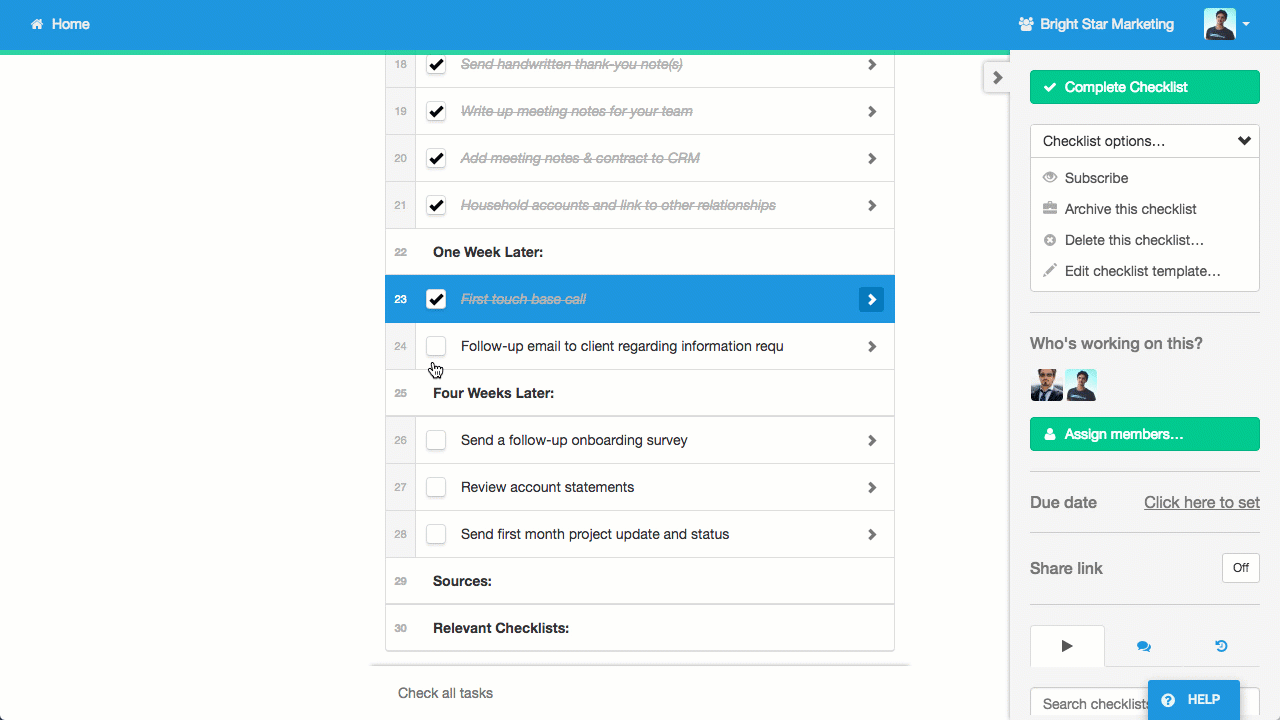
“To put it bluntly, goals are for losers… goal-oriented people exist in a state of nearly continuous failure that they hope will be temporary.” – Scott Adams, Scott Adams’ Secret of Success: Failure
Matching up systems vs goals might seem odd but the truth is that you should be using one and not the other.
Let’s be honest – we’ve all set goals that we’ve never met.
From broken New Year’s resolutions to a failed career as the next big rockstar, goals have a nasty habit of not being met.
Scott Adams, the author of Dilbert thinks much the same in his book How to Fail at Almost Everything and Still Win Big: Kind of the Story of My Life.
He identifies that everything wrong with goals can be solved by instead applying a regular system to complete your tasks.
I scoffed at first but then realized that I’d done precisely that to lose 70 lbs in six months and learn the piano.
That’s why today I’ll cover:
- What are goals?
- What are systems?
- Systems vs goals
- Systems replace motivation with routine
- Goals are hard to follow up on
- Systems are consistently rewarding
- Goals carry a more negative mindset
- Systems are more realistic and flexible
- Turning goals into systems
- How to build systems
Let’s get started!
What are goals?
Goals are things that we want to achieve, usually expressed as a single-point statement.
It doesn’t matter whether the thing you want to happen is large, small, short-or-long-term. All something has to be to class as a goal is to be your desired view of the future.
Take my experience for example. As long as I can remember I’ve had two goals:
- Get fit
- Learn the piano

Other goals have come and gone with varying levels of success but these two have been the most consistent.
I’ve put time, effort, and resources into both to different degrees of success. I’ve bought jump ropes, yoga mats and blocks, running shorts and shoes, new swimwear, a keyboard and stand, several piano books, and so on.
There have also been times that I’ve separated my goals into smaller, more achievable goals (since something as vague as “get fit” can become overwhelming and disheartening).
For example, I split “get fit” into:
- Learn how to jump rope consistently
- Reach 50 consecutive skips while jumping rope
- Reach 100 consecutive skips while jumping rope
- Perform a jump rope crossover
- Do jump rope for 10 minutes without needing to stop
- Do jump rope for 20 minutes without needing to stop
- Learn a bodyweight circuit by heart
- Slim down to 170 lbs
- Learn a basic yoga routine
- Follow a 30-day yoga program
Likewise, I split “learn piano” into:
- Learn the notes for each key
- Learn to read classical music notation
- Learn my first note scale
- Perform a tune that requires only my left hand
- Perform a tune that requires just my right hand
- Perform a tune that requires both hands at once
- Work through my first “Beginner’s Guide” piano book
By splitting my goals up like this I was able to more readily plan how I would go about achieving my larger aims. It also let me stay motivated for longer, as each smaller goal achieved allowed me to tick off an item, rather than making no noticeable progress towards the overall goal.
That’s the main problem with setting goals – it’s all too easy to lose motivation if you set your sights too high or long-term.
Motivation is a fickle thing, and it’s unlikely that you’ll be able to keep the same level of enthusiasm for something two years down the line as when you first started.
That’s where systems come into play.
What are systems?

Systems are almost the antithesis of goals, in that they’re entirely about creating a repeatable set of actions instead of considering the overarching goal that they’re working towards.
If goals are the macro, systems are the micro. They’re how you achieve your goals.
However, to say that every system needs to work towards a goal in order to be effective would be disingenuous. It would be more accurate to say that systems allow you to reach and surpass your goals while avoiding many of the common pitfalls that goals bring.
Systems do this by laying out a series of actions that need to be performed in sequence, replacing motivation with a routine than becomes second-nature. I’ll cover this in more detail later.
After the struggles and lack of progress I found while attempting to reach my goals of getting fit and learning the piano, I decided to approach things differently.
I created a system to substitute for each goal, and found myself making more progress than I had in the previous five years.
My systems were:
- Do my exercise routine on Mondays, Wednesdays, and Fridays
- Play piano for 15 minutes on Tuesdays, Thursdays, and Saturdays
My focus was never on reaching a particular limit of skill or fitness – the system itself became the closest I had to a goal.
Over the first six months of using these systems (along with eating better and doing office exercises to counter some RSI in my wrists) I was able to lose 70 lbs, going from 220 lbs down to a much healthier 150.

While my piano progress was much slower due to a steeper learning curve and dedicating less time to it, in the same time frame I was able to learn how to read classical music and (slowly) play along with most of the intermediate-level books I had bought.
There was no special technique or motivation that let me achieve these results or build these systems. I simply noticed that my efforts weren’t getting me anywhere no matter how much I split up my goals.
Once created, the systems were almost self-sustaining in terms of my motivation. I exercised because it was time to exercise and practiced because it was time to practice – the system removed the need to spend mental energy deciding whether or not to act.
Systems vs goals
As you might have already gathered from my personal stories, I’m an advocate of systems over goals. In that I agree wholeheartedly with Scott Adams, the author of the Dilbert comics.
More relevantly, Adams also wrote How to Fail at Almost Everything and Still Win Big: Kind of the Story of My Life, in which he extols the virtues of creating systems and the pitfalls of setting goals.
“… losing ten pounds is a goal (that most people can’t maintain), whereas learning to eat right is a system that substitutes knowledge for willpower.” – Scott Adams, Goals vs. Systems

He identifies some core advantages of systems over goals which I’ve combined with my own experience to bring the following benefits:
- Systems replace motivation with routine
- Goals are hard to follow up on
- Systems are consistently rewarding
- Goals carry a more negative mindset
- Systems are more realistic and flexible
Systems replace motivation with routine
I’ve already mentioned this but, by having systems and routines rather than goals, you can almost entirely remove the need for self-motivation.
Goals are over-arching and typically take a fair bit of time to complete. This means that the entire time you’re working towards them you’ll need to motivate yourself to make progress.
I’d never go so far as to say that you can’t stay consistently motivated.
I will say that it’s easier to keep up a habit than to constantly spend mental energy deciding what to do and when to do it.
By their very nature systems encourage you to form consistent routines that will soon become second nature. Instead of telling yourself “I should do some exercise to get fit”, you’re saying “it’s Monday – time to exercise”.
After all, you get much more done when the action isn’t presented as a choice to decide on, but an action that you have to perform.
Goals are hard to follow up on
What happens when you complete a goal?
You’ll probably stop doing what helped you reach that goal, slipping back into your old habits.
That’s exactly what happened the first time I wanted to lose weight and get fit. I told myself to get down to 170 lbs and worked hard to reach that goal. After achieving that, I became complacent and ended up back where I’d started at a hefty 210 lbs.
Systems, meanwhile, are an ongoing effort.
By exercising three times per week I wasn’t aiming to reach a particular weight – I was trying to get healthier by exercising regularly.
To that end I was able to surpass my previous goal and maintain a healthier weight for far longer than I’d ever managed before.
Systems are consistently rewarding

It’s disheartening to work towards a goal only to make such little progress that you feel that your efforts are going to waste.
Breaking up your goals and making smaller, short-term commitments helps a lot with this dissatisfaction but never solves it. There will forever be a period where the actions you take aren’t allowing you to make tangible progress.
Systems give you a win every time you manage to carry out a task.
Learning how to read classical sheet music took months. Every time I tried to do so with goals I would get frustrated and give up for weeks at a time, making me forget the progress I’d made and start from square one every time.
With my system of regular 15-minute practice sessions, I was able to feel the accomplishment and satisfaction of making progress every time I sat down at the keyboard.
Instead of grinding away at a brick wall of knowledge, I had regular hits of dopamine to reinforce the habit and ease me through to my original goal.
Goals carry a more negative mindset
Something that most people don’t consider when setting goals is the mindset that they create.
A goal is a target which you can’t yet reach. Ergo, the attitude when working towards it is inherently negative, which itself is demotivating.
“I want to reach this goal” implies “I’m not good enough to do this yet” or “I can’t do this yet”.
Take my getting fit example.

While it was motivating to reach a goal I wasn’t able to previously, such as jumping rope for 20 minutes straight, my goals would inevitably loom over my efforts.
It’s not that I wasn’t making progress, it’s that the overall goals made every day that I didn’t achieve them seem like a failure. This is one of the key reasons I gave up time and again.
When applying my regular workout system, however, every instance of the system was a win. Instead of being defeated by an overarching goal every day, I was ticking off my calendar with consistent successes.
That in itself is an incredible motivator. People prefer to consistently win than to lose.
Systems are more realistic and flexible
The other big problem with setting yourself goals is that they’re much less flexible than systems.
A goal assumes that you will be able to achieve it in the given timeframe. You can adjust these based on current circumstances but this comes with the feeling of failure – of not being able to reach your initial aim.
Depending on the scope of the goal you’ve set, the amount of time for something to go wrong that’s outside of your control can be vast. This only reinforces the need for more adaptable aims to avoid the sense that you’re failing.
Remember, the more failure you feel, the less motivated you’ll be to continue.
To counter that, systems are highly adaptable and realistic due to their focus on a much smaller time period.
Rather than having to work away at a goal for months, you can keep up the system for a week (or even a few days) and adjust accordingly. If your schedule is too tight, consider relaxing the system you’ve created. If something goes wrong, try to account for it and prevent it from happening in the future.
If something happens and you can’t complete your system for a week or two, it’s also not as demotivating to start up again.
You haven’t lost progress towards your goal – you simply couldn’t carry out your system. No worries, it’s time to get back on it.
Turning goals into systems
It’s all well and good to say “create systems, not goals” when I’m used to doing so. However, when starting out it’s hard to know how to turn your goals into systems.
When I started making my systems for working out and learning piano, I had no direction or help. My original idea was to create repeatable processes to help me reach my goals.
Turns out, working at Process Street has rubbed off on me!
I started with my goals:
- Get fit
- Learn the piano
I knew how I was going to go about achieving these (work out, work through piano books, practice, etc) but didn’t have a set system to structure these activities around. This led me to be paralyzed by choice, often not doing anything at all.
So, I split up my goals into smaller chunks (you can see these in the earlier “What are Goals?” section).
I then realized that to meet all of these smaller goals I’d need to structure my efforts into a regular checklist that I could use to make progress.
This is what lies at the core of a good system – a repeatable process that you can follow which has a clearly defined start and end.
To recap:
- Identify your goals (what you want to achieve)
- Split them into bitesize chunks
- Use those smaller goals to create repeatable systems
How do you create systems? I’m glad you asked…
How to build systems
Systems are, thankfully, easy to create. All you have to do is identify and document a repeatable series of tasks to perform.
For example, my goal of getting fit was turned into the following system:
- Change into comfortable clothes for exercise
- Fill a pint glass with water
- Jump rope for 20 minutes to warm up
- Perform a bodyweight circuit routine for a half-hour of varied exercise
- Cool down with a 20-30 minute yoga session
I ran through this system every Monday, Wednesday, and Friday at 5 pm as soon as I finished work. This eliminated the problem of motivation, as I received a reminder when my regular checklist was due to be completed.
Speaking of which, I documented my workout (and piano) systems in Process Street templates.
Process Street is the easiest way to document, improve, and track your regular duties.
Using Process Street, I created a new process template and wrote out my workout routine in a series of tasks. I populated these tasks with details such as the bodyweight routine I was using, tips for jumping rope, and links to yoga routines I could follow along with a recorded instructor.
I then assigned myself to the process and set a checklist (a single-run instance of the process) to run three times a week. This gave me an email notification every time a checklist was run and let me immediately find and follow the relevant checklist.
Start creating your systems by signing up for Process Street for free today!
What systems do you regularly use? Let us know in the comments below!







 Workflows
Workflows Projects
Projects Data Sets
Data Sets Forms
Forms Pages
Pages Automations
Automations Analytics
Analytics Apps
Apps Integrations
Integrations
 Property management
Property management
 Human resources
Human resources
 Customer management
Customer management
 Information technology
Information technology



Ben Mulholland
Ben Mulholland is an Editor at Process Street, and winds down with a casual article or two on Mulholland Writing. Find him on Twitter here.